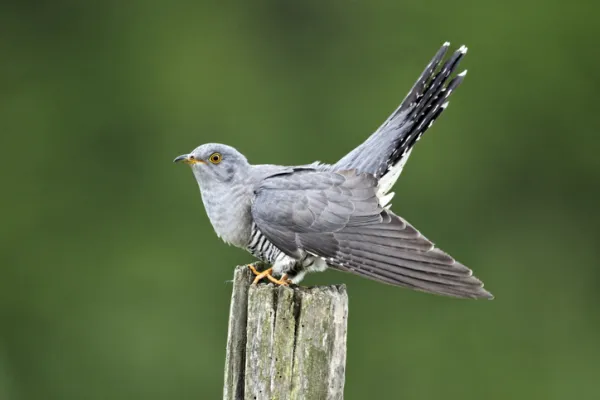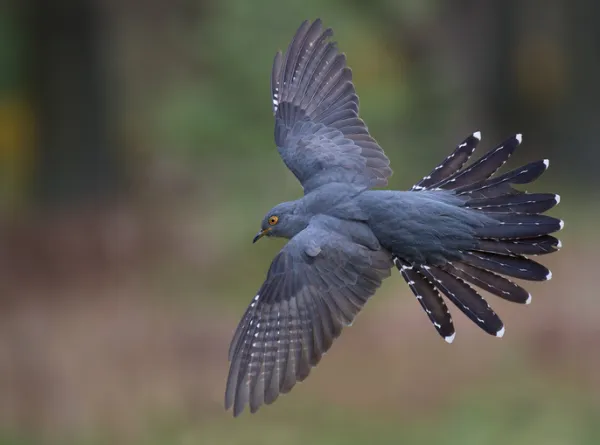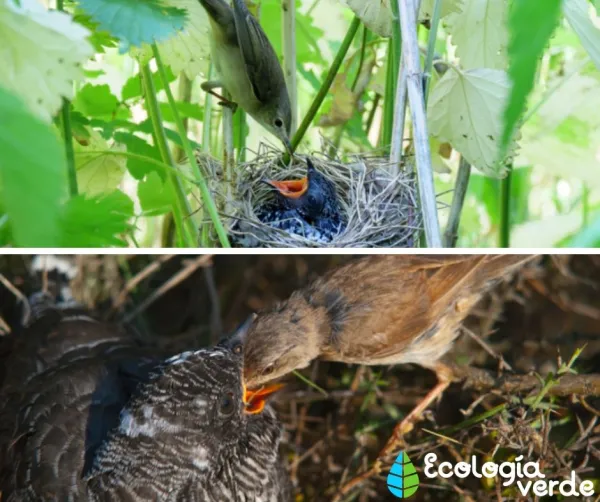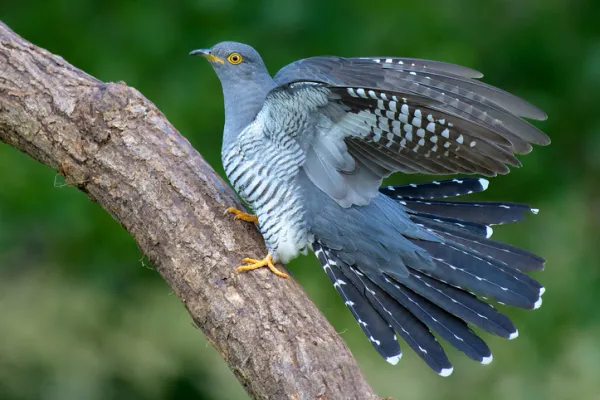The cuckoo (Cuculus canorus) is one of the most fascinating birds studied in ethology—the science of animal behavior. It is world-famous for its brood parasitism strategy, in which the female lays her eggs in the nests of other birds, leaving the incubation and rearing of her chicks to unsuspecting foster parents. This remarkable behavior has given researchers valuable insight into evolutionary adaptations and counter-adaptations between the cuckoo and its host species.
This trait is instinctively inherited by new generations of cuckoos, ensuring the continuation of this highly efficient breeding strategy.

Size and Plumage
Adult cuckoos measure around 25 cm in length. Males have coppery-brown to grey-brown upperparts and pale grey underparts, while females are mostly grey. This sexual dimorphism in plumage helps distinguish the sexes.
Diet
Primarily insectivorous, cuckoos feed on caterpillars (including hairy ones avoided by many other birds), beetles, and occasionally small amphibians. Adult males may also consume eggs of smaller bird species.
Call
Their famous “cuck-oo” call, particularly from males in spring, is one of the most recognizable bird sounds in Europe and Asia, used both to attract mates and to mark territory.
Migration
Cuckoos breed in temperate and cold forests across Europe and Asia, but migrate thousands of kilometers to warmer parts of Africa for the winter.
Brood Parasitism
The most notable feature of the species is the female’s habit of laying her eggs in the nests of other birds, relying on aggressive mimicry to trick the host into raising the cuckoo chick as its own.

The cuckoo’s brood parasitism is directly linked to its incubation cycle:
Females typically lay one egg every 2–3 days, with each egg requiring about 5 days of development in the ovary before being laid.
Cuckoo eggs hatch faster than those of most host species, giving the cuckoo chick a head start in life.
Soon after hatching—usually within 10 days—the cuckoo chick instinctively pushes any remaining eggs or newly hatched chicks out of the nest.
The foster parents, unable to recognize the chick as an imposter, devote all their care and food to the young cuckoo, ensuring rapid growth.
This adaptation allows adult cuckoos to migrate without the burden of rearing young, while their chicks benefit from exclusive parental care from the host.

Cuckoos have a wide range across three continents:
Breeding range: Europe, temperate and boreal Asia
Wintering range: Sub-Saharan Africa and tropical regions
Preferred habitats include woodlands, scrublands, and dense thickets, where they can find an abundance of potential host nests. Their elusive nature, combined with dense vegetation, makes them difficult to spot, though their calls can often be heard during the breeding season.

Ecological Role
By feeding on large numbers of caterpillars—especially those that damage crops—cuckoos help maintain ecological balance as a natural form of pest control.
Conservation Status
Globally, cuckoo populations remain stable, but local declines occur due to habitat loss, pesticide use, and changes in climate that disrupt migration and breeding timing.
Bibliography
Martínez, J. G. et al., (2009) Distribution of the Common Cuckoo (Cuculus canorus) and its hosts in the Sierra Nevada (Southern Spain). Research Projects in National Parks: 2006-2009.
Soler, M. (2000) Are birds able to recognize their own chicks? Ardeola Journal. Volume 47(2), pp: 279-286.
animal tags: cuckoo bird
We created this article in conjunction with AI technology, then made sure it was fact-checked and edited by a Animals Top editor.